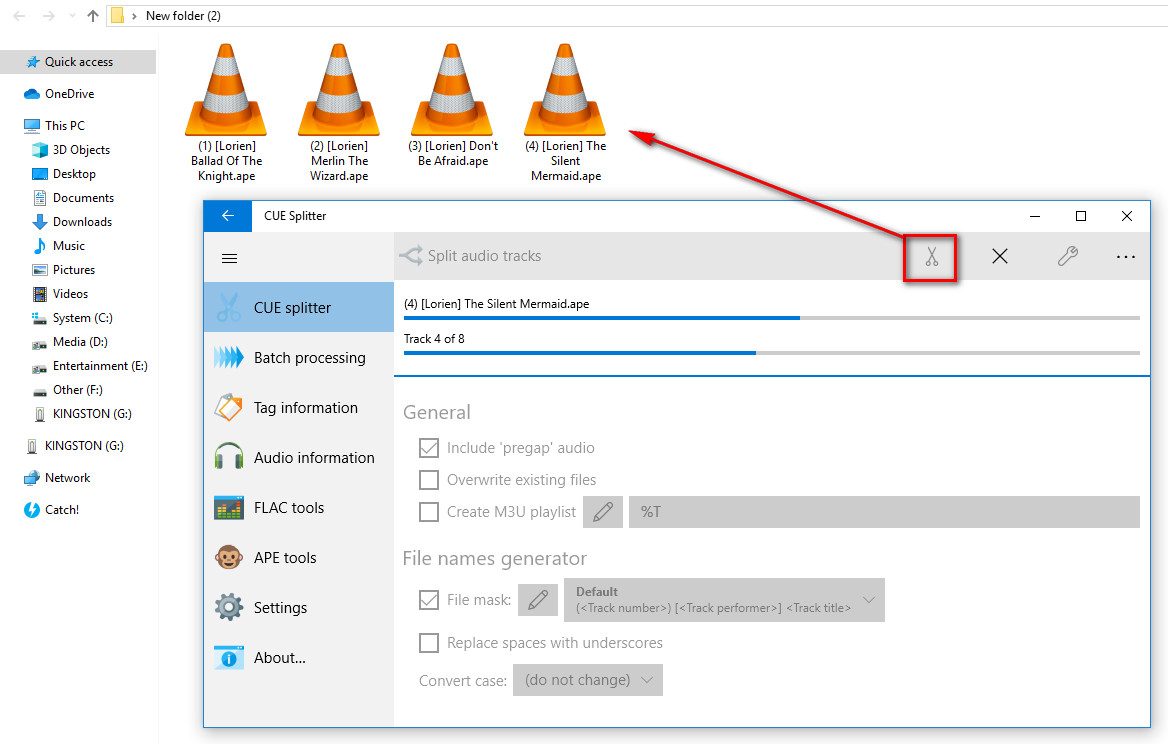
- Ape file disabled cue splitter flac software#
- Ape file disabled cue splitter flac zip#
- Ape file disabled cue splitter flac windows#
Unfortunately, any type of signal processing like audio compression has a billion people making claims against it - valid or otherwise. The implementor must still get a patent license. However, if there are underlying patents that read on that source code, you do not get to convey the technology to someone else just because you give away the source.
Ape file disabled cue splitter flac software#
With software we can write and give it away as "open source." That model works fine. In essence it is VBR (Variable Bit Rate) but lossless all of the time.Ĭlick to expand.While there is an element of truth to what you are saying the overriding motivation is not that.

You will see differences between tracks but also within. Obvious the compression and therefore the bit rate you see varies with the complexity of the signal. You cannot control the bitrate much and the result can be from around 100% of the input rate (if you are encoding noise), down to almost 0 (encoding silence). It's more like specifying a quality with Vorbis or MPC, except with FLAC the quality is always "lossless" and the resulting bitrate is roughly proportional to the amount of information in the original signal. With FLAC you do not specify a bitrate like with some lossy codecs. The bit rate as displayed by your media player is the amount of bits per second read, not the bit rate after expansion to linear PCM. If you play MP3 you see a lower bit rate too so they start wondering if FLAC is lossy too.Īs FLAC is compressed, the same information is stored using less bits ( otherwise you can't get a smaller file….). Play the same track in FLAC format and you will see a lower value, often around 700. If you play a 16/44.1 track ( CD audio) ripped to WAV you see a bit rate of 1411 Kbit/s. Regardless of the compression ratio chosen, the result is always lossless Going from 5 to 8 in general results in a marginal smaller file. In practice 5 is often recommended as a nice compromise between coding time and file size. The more time is allowed the higher the compression. The compression ratio simply tells how many CPU FLAC is allowed to use to find the best possible compression (linear prediction).

The compression ratio is a source of misunderstanding.Ī lot of people thing that it works like the bitrates in MP3 so more or less loss. You can choose 0 – 8 where 0 is no and 8 the highest compression. Second best: there are workarounds to enable these players to play FLAC.

They want you to use their own proprietary formats.īest solution is not to use their players.
Ape file disabled cue splitter flac windows#
There are two exceptions to this rule: iTunes and Windows Media Player.īoth Apple and Microsoft have a strong dislike for open source. The integrity of the audio data is insured by storing an MD5 signature of the original unencoded audio data in the file header, which can be compared against later during decoding or testing. 1 Hz to 655,350 Hz sample rate in 1 Hz incrementsįLAC's metadata system supports tags, cover art, seek tables, and cue sheets.
Ape file disabled cue splitter flac zip#
It works like Zip you can compress and decompress the audio without loss.Īs FLAC is optimized for audio the compression is much better than with Zip.ĭepending on the music the compression rate will be 30%-50%. Over the years FLAC (Free Lossless Audio Codec) has become one of the most popular open source audio codecs.


 0 kommentar(er)
0 kommentar(er)
